BEA C ON THE
Summer/Fall 2024

Look inside for informative articles, summereventphotos,informationonour upcoming Expo’s & more!




Summer/Fall 2024

Look inside for informative articles, summereventphotos,informationonour upcoming Expo’s & more!



President James Anderson, PE Becht Engineering BT, Inc.
President-Elect Noni Roan, CMCA
Pinnacle Financial Partners
Vice-President Vicki Eaton, CMCA, AMS, PCAM, LSM
Secretary Hillary Collins, Esq. Rees Broome, PC
Treasurer Rebecca Clemson-Petrik, CMCA, AMS, PCAM FirstService Residential
DIRECTORS
Cynthia McKoin, Potomac Ridge Condominium, Inc.
Gary Saylor, Atlantic Maintenance Group
B.K. Swartwood, CMCA, AMS, PCAM, Montego Bay Civic Association
Gail Windisch, CMCA, AMS, PCAM, Tidewater Property Management, Inc. AAMC
Communications Adrianne Gracias, Chair Tri State Restorations
Vince Scarfo, CMCA, Vice-Chair Clear : Restoration and PreDisaster Consulting
Delmarva Chad Toms, Chair WHITEFORD
Lisa Meck, CMCA, AMS, Vice-Chair
Carl M. Freeman Companies
Education Michelle Jones, CMCA, AMS, PCAM, LSM, Chair General Manager, Lake Linganore Association
Christa Brady, AMS, PCAM, CIRMS, Vice-Chair USI Insurance Services
EXPO
Golf
Valerie Lykins, Executive Director
Angela Marsh, Marketing and Events Manager
Mahogani Brevett, Administrative Specialist
PO Box 6838, Columbia, MD 21045
Office Line: 410-348-1534
Membership Line: 410-505-8746
Office Email: contact@caimdches.org
Membership Email: membership@caimdches.org www.caimdches.org

Ellen Throop, Esq., Chair Davis, Agnor, Rapaport & Skalny, LLC
Joanne Frallicciardi, CMCA, AMS, Vice-Chair Pelican Property Management, AAMC
Chase Hudson, CIRMS, Chair Sahouri Insurance
T.J. Socks, Vice-Chair Becht Engineering BT
Legislative Cynthia Hitt Kent, Esq., Chair
Law Office of Cynthia Hitt Kent, LLC
Karen Fooks, CMCA, AMS, PCAM, Vice-Chair Community Management Corporation/Associa
Magazine Michelle Baldry, Chair Reserve Advisors
Don Plank, PCAM, Vice-Chair EJF Real Estate Services
Membership Jennifer Melson, CMCA, AMS, Chair
Premier Property Management
Beth Bencivenni, Vice-Chair RestoreCore
Social
Eddie Ramos, Chair
Atlantic Maintenance Group
Kelly Rae, Vice-Chair Roofpro, LLC
Doing great things is rarely easy. Sometimes doing almost anything isn’t easy. I recall some early-life (parental?) wisdom imparted upon me that goes something like, “anything worth doing isn’t easy.” Guess what? Great accomplishments are almost always made up of a solid plan, hard work and a bunch of smaller “good” (perhaps not great) things. Doing smaller, good things is, in fact, easy and making an impact may therefore be easier than you think.
Humor me, this is a 20-minute watch that I’m hoping you’ll enjoy and maybe even remember some of it.
https://www.youtube.com/watch?v=pxBQLFLei70
Do we set out each morning trying to do that one great thing, accomplish that one monumental task that may change the world? Perhaps not, but we certainly don’t wake up planning or trying to fail. More on that later… now Chapter goings-on! What’s been happening in our Chapter?
We’ve taught, we’ve presented, we’ve learned, we’ve golfed, we’ve socialized, we’ve mentored, we’ve “crabbed,” we’ve volunteered, and we’ve trialed and tribulated. I’d like to hope that – mostly – we succeeded. Oh, and we also participated for the FIRST time as special guests at the Virginia Leadership Retreat. Special thanks to our friends at the Washington Metro, Central Virginia and Southwest Virginia Chapters for their welcome, leadership and team effort.
Mentoring, you say? Yes! Our THIRD year of partnering with The Complete Player Charity in their summer camp event was a great success. There’s nothing I enjoy more than watching young people learn and grow, we’re looking forward to enhancing and increasing our involvement and partnership with TCP. “Ask me!” This is an amazing program, and I look forward to participating with them as long as they have me. Kudos to Andy
Schindling and his team of mentors for what they are doing for our future.
Our SECOND Joint Chapter Social Event is right around the corner, and I hope to see as many of our proud Chesapeake Chapter Membership flying our flag! At the end of the day, we’re all part of the Community Associations Institute and doing great things for our communities, Boards, Homeowner Leaders, and each other.
CRCCAI Strategic Planning… We embarked on our strategic planning course a few years ago, made progress, and in that, we developed a plan. After our plan was established and published, the momentum stopped and our (my) attention was consumed by other things that I thought seemed more important at the time, including reacting to COVID-19. I’m happy to report that we have resurrected our strategic planning – in earnest - by standing up an ad hoc committee (soon to be formally chartered). You may have also seen some of their work through surveys and responses. We are asking, we are listening, and we are working to improve. Your voices and your votes count – we need more of them!
In my former life as a Sailor, I had the privilege of serving for, working with, and meeting many, many great leaders. I also had the privilege of being put into challenging

leadership positions that forced me out of my comfort zone, they forced me to understand people and solve problems – ultimately helping me be a (hopefully) better leader and better person. I could never have done any of it alone. In my current life as part of our Chapter, I’ve had the privilege of meeting many, many great leaders and great people. I’ve also had the privilege of taking on leadership positions that have been some of the most rewarding experiences in my life. Guess what? I could never have done any of it alone. I’m so thankful for all the time and energy my colleagues on the Board have spent guiding me (even today), working together in doing the work that guides our Chapter. As Chapter President, I’ve peeked in on many of the committee meetings, mostly to listen and learn, perhaps take the temperature of the room. What did I hear? I heard vibrant dialogue and discussion. I heard differing opinions and perspectives. I heard unity. What did I learn? I learned that there are so many wonderful people involved in making our Chapter function, grow and succeed. Thank you all – seriously. If you’ve responded to any of our surveys or such and want to see change, sign up. I guarantee you’ll get out of it exactly what you put in. I especially thank all those Committee Chairs, Vice-Chairs and members that do so much for our Chapter.
In my first Beacon article, I talked about community – how we can grow together. In my last article, I talked about succession – how we can prepare for our future! We must continue to gather, select, recruit, train and mentor our replacements. If you’ve done well in training your replacement, why not let go and let that person step up and become a leader. If you’ve not done so well in training – it’s time to get to work. They’re ready!
With that, here’s the TL:DW version of the 20 minute video:
1) Make Your Bed: Small tasks matter. Pay attention to the little things – they matter.
2) Teamwork: Find someone to help you navigate life’s (or work’s) challenges—don’t go it alone.
3) Measure People by Their Hearts: Look beyond appearances. Judge people by their character and determination, not superficial factors.
4) Learn from Failure: Embrace setbacks. Failing is part of growth. Keep moving forward.
5) Enjoy the Circus: Embrace challenges, life has hardships. Use them to build resilience and strength.
6) Take Risks Creatively: When faced with obstacles, don’t hesitate. Look for innovative solutions.
7) Stand Up to Bullies: Don’t back down. Face challenges head-on and fight for what’s right.
8) Stay Calm in Dark Moments: Maintain composure during tough times. Your actions impact others –more than you can imagine.
9) Sing in the Mud: Even when things get tough, maintain hope, inspire and help others.
10) Never Ring the Bell: Persevere and don’t quit. ‘Finishing’ may take months or even years, but I encourage you to do what you can to finish what you start. I promise it will be worth it.
Do I do these things every day? No. There are days where I may not accomplish even one simple, small task. However, do I feel small accomplishments or achievements when I’ve done something along one of these things? Absolutely! Sometimes a bunch of bad things throughout a day can be erased by a simple task completed, a simple word to, or an ear for, a colleague (or stranger).
Regards,
James W. Anderson, P.E Chesapeake Region Chapter President Vice President/Principal Engineer, Becht Engineering BT

Ms. Carol Abel
Covered Bridge Trails COA
Mr. Juan Aguirre
East Crown Condominium
Ms. Judith Amick
Ms. Angela Davis
Crown Stacked Townhome Condominium
Danielle Davis
Community Management Corporation
Mr. Kyle Davis
The Copley at Crown, A Condominium
Ms. Julie Andre
The Copley at Crown, A Condominium
Ms. Stephanie Andrews
Legum & Norman
Mr. Martin Aronson
Crown Stacked Townhome Condominium
Ms. Suzanne Asplen
The Gatherings at Quarry Place Condominium
Ms. Christine Ayers
The Gatherings at Quarry Place Condominium
Mr. Barry Ball
Griffith Lake Estates HOA
Mr. Daniel Bandy
Cool Springs at Charlestown HOA
Dr. Andro Barnett
Potomac Ridge Condominium, Inc.
Shelley Bayne
D H Bader Management, Inc
Ms. Ariana Beall
CFM Management Services
Ms. Larue Beckley
Potomac Ridge Condominium, Inc.
Mr. Hunter Bowling
Tidewater Property Management
Mr. John Brady
Village Management Inc.
Mr. Adam Candeloro
VASCO Pro Services
Mr. James Christina
Covered Bridge Trails COA
Sheila Clower
Burncourt Condominiums
Mr. Mark Connors
Kings Creek Homeowners Association, Inc.
Mr. Robert Cooper
Saddle Ridge Property Owners Association
Mr. Tsga Dafla
A Team Cleaning Service
Edward’s Lawn & Landscaping
Mr. Mitch Decker
SealMaster of DelMar
Ms. Patricia Drago
Ms. Frances Estes
Residential Realty Group, Inc.
Ms. Dorothy Filbert
Kings Creek Homeowners Association, Inc.
Ms. Cynthia French
Covered Bridge Trails COA
Ms. Catherine Fulkerson
Mr. Henry Gearhart
Saddle Ridge Property Owners Association
Mr. Ronald Glick
Kings Creek Homeowners Association, Inc.
Greg Hamilton
Eva Mar Homeowners Association
Ms. Amy Heller
American Community Management
Mr. Brian Henderson
The Copley at Crown, A Condominium
Ms. Karen Holmes
Craig Hoss
Griffith Lake Estates HOA
Gregory Hurley
Claire Jacobs
Clagett Enterprises, Inc.
Mr. Stephen Jenkins
Property Management People, Inc.
Noah Johnston
Penthouse Condominium
Ms. Nancy Jones
Cedar Bay Condominiums Owners Association
Mr. Harry Jones
Potomac Ridge Condominium, Inc.
Mr. Eugene Jubber
Reserve Studies of Delmarva LLC
Mr. Lee Kamasinski
Sawgrass Community Homeowners Association
Mr. Steven Kittka
Saddle Ridge Property Owners Association
Mrs. Darlene Kolodi
Forest Landing Community Association, Inc.
Ms. Carrie Larsen
Potomac Ridge Condominium, Inc.
Mr. James Leonard
Saddle Ridge Property Owners Association
Ms. Lisa Madairy
Homeland Condominium Association
Mr. George McKeon
Saddle Ridge Property Owners Association
Mr. Edward Milowicki
Covered Bridge Trails COA
Mr. Jack Mueller
Cedar Bay Condominiums Owners Association
Casey Murray
Clagett Enterprises, Inc.
Mr. Thomas Myers
Prime Management Association
Miss Abigale Nespor
Lake Linganore Association, Inc.
Mr. Paul Nye
Kings Creek Homeowners Association, Inc.
Mr. Tony Ondrusek
Aaction Home Repairs and Restoration, Inc.
Mrs. Shawn Papadimitris
Crown Stacked Townhome Condominium
Mrs. Shawn Papadimitris
East Crown Condominium
Mrs. Shawn Papadimitris
The Copley at Crown, A Condominium
Mr. Joseph Parisi
Sawgrass Community Homeowners Association
Dee Poholsky
Raffles Condominium Association, Inc
Mr. Gregory Primeau
Site-Ac, Inc.
Mr. Stephen Reading
Snowden Overlook Community Association
Mr. Gregory Rozanski
Greenbelt Homes, Inc.

Ms. Lisa Salerno
East Crown Condominium
Mr. Mark Salzberg
Ms. Denise Stewart
Kings Creek Homeowners Association, Inc.
Ms. Christine Sturm
Crown Stacked Townhome Condominium
Ms. Brendolyn Sanchez
Cool Springs at Charlestown HOA
Mr. Joe Smith
Roche Landscaping Services
Mr. Cannon Smith
Community Management Corporation
Mrs. Megan Smith
Maredith Management
Julianna Stein
Stevenson Village Condominium Association
Covered Bridge Trails COA
Mr. K. Bryan Thrush
The Copley at Crown, A Condominium
Dorie Tyson
Community Management Corporation
Mr. Bob Veigle, Jr.
Cedar Bay Condominiums Owners Association
Mr. Michael Verill
Severna Park Gateway Condominium
Ms. Diane Vitelli
The Copley at Crown, A Condominium
Ms. Joe Ann Weaver
Village Management, Inc.
Mr. Travis Wells
Wells Home Improvements, LLC
Mr. Don Wilkerson
Griffith Lake Estates HOA
Ms. Donna Williams
The Gatherings at Quarry Place Condominium
Mr. Jim Zavodny
The Gatherings at Quarry Place Condominium
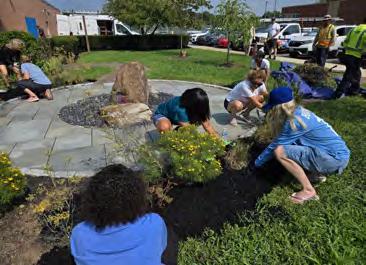






Friday, November 8, 2024
8:00 am – 2:30 pm
Princess Royale Hotel 9110 Coastal Hwy • Ocean City, MD 21842
For hotel reservations, please call the hotel reservations direct number: 1-800-476-9253 and ask for the group name Chesapeake Chapter CAI Expo or block code 2411CHESAP and let them know the dates you want to book. The group dates are November 7-9th. The cutoff date for a room block is October 7th.
Exhibitor Booths
BOOTHS AND SPONSORSHIPS are now available! CONTROL THE CHAOS – MANAGING COMMUNITY MAYHEM!
SCHEDULE OF THE DAY Thursday
2:00 – 4:00 pm Exhibitor set-up 4:00 – 6:00 pm Happy Hour Friday 6:30 – 7:45 am Exhibitor set-up 8:00 – 9:00 am Registration/Continental Breakfast/ Morning Expo 9:00 – 11:00 am Introductions/ General Session/Q&A 11:00 am – 12:30 pm Lunch & Expo (Expo ends) 12:30 – 1:15 pm Breakout Sessions #1 1:15 – 1:30 pm Break 1:30 – 2:15 pm Breakout Sessions #2

Booths: $750 – includes two tickets to Happy Hour on Thursday evening!

Reserve your Booth or Sponsorship today! All exhibitors must sign the Chapter’s suitcasing policy on their registration form
Make no mistake, Rehoboth Beach is not a “hidden treasure.” A treasure, for sure, but hidden? The coastal resort town has a national reputation as a clean, fun and family-friendly vacation spot. The boardwalk and beaches regularly feature on “Best Of” lists in national publications. Tens of thousands of people visit Rehoboth every summer, soaking in the sun and indulging in the excellent food and attractions. Rehoboth Beach is well known and rightfully so. But that doesn’t mean you can’t find some hidden treasures within the town, each of which is worth seeking out the next time you head to the shore for some Dolle’s Salt Water Taffy and Boardwalk Fries. Here are two of them:
At the northern end of the town, the Rehoboth Avenue drawbridge crosses a canal that stretches from the adjacent town of Lewes in the north to the Rehoboth Bay in the south. On the east bank of the canal, behind the Egg Restaurant and just south of the drawbridge, sits a peculiar structure. Standing about 12 feet high, it looks like a building pillar without a building to support, or an elaborate casing around a rain gauge. This is the Oak Grove Chimney Swift Tower. Built in 2017 by the Lovett family that owns the nearby Egg Restaurant and Oak Grove Cottages, it provides a roosting place for some of the hundreds of chimney swifts that rule the skies of Rehoboth in the summertime.
Chimney Swifts nimbly maneuver around rooftops and trees to catch insects, spending nearly all of their waking hours on the wing. Their aerodynamic body and extremely short legs mean they cannot perch like other birds—they instead cling to vertical walls inside chimneys, hollow trees, or caves. As older buildings with chimneys are torn down, the Chimney Swift has suffered population declines. Losing these squadrons of bug-eaters would not be good, meaning man-made refuges like the Oak Grove Chimney Swift Tower are extremely important for the health of the species.
So, the next time you’re in Rehoboth, stop by the Oak Grove Chimney Swift Tower to catch a glimpse of these impressive little birds swooping about, and give them a “thank you” for keeping the bugs off your ice cream cone.
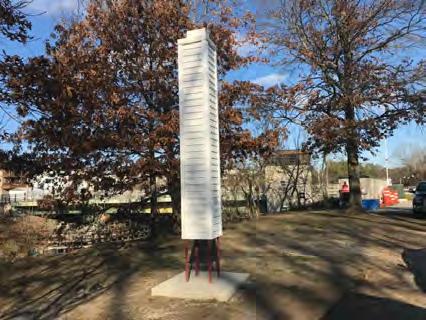
Just a few blocks away from the Rehoboth Beach boardwalk is Silver Lake, a small, serene, natural freshwater lake that stretches from Rehoboth to Dewey Beach. Silver Lake holds the distinction of being the closest freshwater lake to the Atlantic Ocean in the United States—and the only natural freshwater lake in Delaware.
At the northwest tip of the lake, you can find the “Turtle Bridge,” a quaint footpath where nature enthusiasts can view turtles, fish (such as bass and perch), ducks, geese, birds, and other local wildlife. The bridge is reachable through Silver Lake Park just at the end of Stockley Street. The park is accessible to other walking and bike trails and contains a playground.
Signage reminds visitors not to feed the wildlife to preserve a healthy lake environment, although people do fish at the lake. It is a great activity on non-beach days. Kids will enjoy seeing the bale of turtles and large fish swimming back and forth under the bridge.
The lake was declared a natural treasure of Delaware in 2004 and is managed by a local nonprofit organization, Save Our Lakes Alliance 3 (SOLA3). You can visit https:// www.sola3.org/ for more information about Silver Lake.
Written by: Jedd Narsavage, LEED AP, Director of Business Development,
Greensweep LLC

Leslie Brown, Shareholder, Rees Broome PC
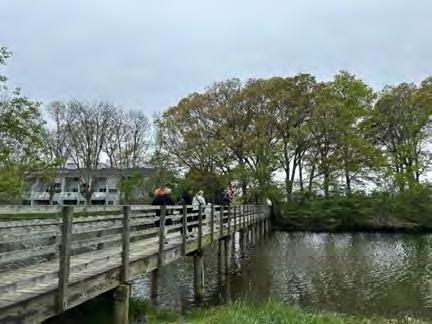

Atlantic Maintenance Group
Becht Engineering BT, Inc.
Hann & Hann Construction Services
Kris Konstruction Roofing Professionals
MillerDodson Associates, Inc.
Minkoff Company
Nagle & Zaller, P.C.
North Arundel Contracting, Inc.
Pinnacle Financial Partners
Rees Broome, PC
RoofPRO, LLC
Sahouri Insurance
The Falcon Group Engineers, Architects & Reserve Specialists
Tidewater Property Management, Inc., AAMC

Davis, Agnor, Rapaport & Skalny
Duradek MidAtlantic
EJF Real Estate Services
Four Twelve Roofing
Palmer Brothers Painting & General Contracting
SI Restoration WHITEFORD
WPM Real Estate Management


Clear: Restoration and PreDisaster Consulting
D.H. Bader Management, Inc.
FirstService Residential Condominium Venture, Inc.
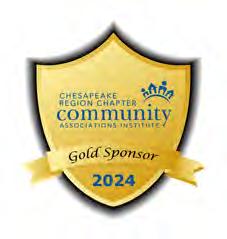

SUMMARY: To be, and act as, a Trustee; A Trustee being an individual person or member of a Board given control or powers of administration of property; with the obligation to do just that.
As a member of the Board of Directors, each Board member is a Trustee of the corporation, and is responsible for ensuring the preservation, protection, maintenance and enhancement of the common elements of the Association; and to manage the Association in a businesslike fashion, and as the governing documents intend. The individual member, acting in concert with the full Board, is responsible for ensuring the day-to-day operations of the Association are reflective of the above. Through leadership and by example, the Board member should proactively develop his or her skills to their fullest potential and to the highest level of professionalism. In addition, the Board member shall support and promote the utmost business and ethical standards for themselves, and on behalf, of the Association.
The Board member, as a part of the Board of Directors, and in order to preserve, protect, maintain and enhance the common elements, the owner and resident experience, through and with appropriate budgetary considerations and operational awareness, shall cause the following to be successfully implemented:
(Setting policy is the primary method Boards develop direction and tone of the community now and into the future. Policies are to be in concert with the responsibility of being Trustees, and in accordance with the governing documents.)
Primary policies. From time to time, as a member of the Board of Directors develop primary policies that pertain to the overall management and administration of the Association; e.g., the adoption of a “policy governance” model of administration.
Ancillary policies. Ancillary policies are adopted for uniform and fair ways of handling issues that arise on a regular basis; such as policies with regard to landscape and architectural variations, clubhouse rentals, violation enforcement, assessment collection, etc.
Follow the governing documents. Ensure that governing documents are followed (meetings, annual meetings and elections, budget preparation, common area use, various restrictions, etc.).
Adhere to applicable laws. Follow all applicable local/ state/federal laws and state corporations codes.
Proper financial management of the community is a paramount duty of the Trustee. The term “proper” means that all aspects of the annual budget reflect the current financial situation as it is, not as the member, or whole Board, wishes it to be. It is not the duty of the Board to adopt artificially low assessments so individual members can continue to live in the Association, or for other political reasons; it is the duty of the Board to manage the finances for the good of the community as a whole now - and into the future.
Collect (or cause to be collected) assessments from the members in accordance with the annual budget, the governing documents, any applicable laws, and in a business-like manner.
Create and execute an annual budget. Prepare and execute a realistic budget based on actual expenses, including adequate contributions to the reserve account in preparation for future repairs.
Maintain adequate reserves. The Board member, acting in concert with the Board is responsible for maintaining a reserve account that is/will be adequate to ensure the preservation, protection, maintenance and enhancement of the common elements in the future.
Resident relations. Each Board member should take a lead role in fostering excellent relations owner/residents on behalf of the Board and the community as a whole.
Communication. Ensure that residents receive regular, truthful, relevant communication from the Association about varying issues that pertain to the community’s status and well-being in the form of accurate and up to date website, newsletters, notices, e-blasts, etc.
Proper vetting and treatment of contractors. Each Board member shall endeavor to ensure that all subcontractors are properly vetted for quality and timeliness of work, and that each contractor is appropriately licensed and insured prior to engagement by the Association; and to ensure that each contractor is treated professionally and courteously and is remunerated for services rendered on time and according to contract.
Each individual Board member is an integral part of the business leadership of their community, and is charged with caring for and maintaining the real property and investments for the community as a whole; and not just for today’s residents, but for those 10, 20, even 40 years down the road. In a very real sense, being a good Board member requires attention, thoughtfulness, and the will and foresight to execute the short- and long-term business of the Association. It not only sounds important, it IS important.
So many people get on a Board for the most banal of reasons – their own agenda (lower the dues!), or circumstances (no one else will do it), with no idea what is truly expected of them. Although this “job description” I’ve composed walks through the basic functions be a Board member, as we all know, these functions are only one part of this multi-faceted job. In the next couple of months, we’ll take a look at all those other requirements/ skills Board members must have and do - and do well - in order to serve their communities.
Written by: Julie Adamen julie@adamen-inc.com
“Julie Adamen is President of Adamen Inc., a consulting, education and employment firm specializing in the community management industry. Julie can be reached via email at julie@adamen-inc.com.”




In 2025 the Chesapeake Region Chapter of the Community Associations Institute (CRCCAI) will celebrate forty-five years as a CAI Chapter supporting community associations. This article is the first of a three-part retrospective of the Chesapeake Chapter.
Before The Community Associations Institute (CAI) was founded in 1973, the United States had experienced a post-war economic boom and a high demand for housing. By the 1970s stagflation resulted in uneven economic growth and higher home costs, mortgage and interest rates.1,2 CAI’s founders-- Byron Hanke, David Rahm, David Stahl, and Lincoln Cummings were industry association and business leaders in the greater metropolitan area around Washington, DC. They observed concerning practices in the industry and limited regulation or education to support owners. They spearheaded the creation of a non-profit, non-partisan membership organization to bring education, networking, and advocacy to homeowners, community managers and business partners. The Community Associations Institute was created. The founders traveled tirelessly across the United States to grow the Institute. They hosted educational events and conferences. They advocated for industry policies and regulatory legislation. The founders chose a chapter model to empower local leaders to bring the benefits of CAI to local members. The Washington Metropolitan Chapter of CAI (WMCCAI) and Orange County, California were the first two Chapters, formed in 1974.3 Additional chapters would be founded, all associated with the national CAI.
Stephen R Bupp, CMCA, AMS, PCAM, was an early CAI leader. He recalls in the late 1970s he and several other members of the Washington Metro Chapter sensed the need for a new Chapter to serve Maryland beyond metropolitan Washington. Mr. Bupp was active both in the WMCCAI Chapter and at the national level. In addition to his CMCA and AMS certifications, he was the second recipient of the PCAM certification. Mr. Bupp served on the CAI faculty and helped develop manager education courses. He authored the CAI publication “Bids and Contracts: How to Find the Right Community

Association Professional”. He served on CAI’s Board of Trustees from 1986-1992. In 1999, Mr. Bupp was elected Chair of CAI. 4,5 In 1980, he served as the second president of the Central Maryland Chapter.
To grow CAI into more of Maryland, in 1979 Bupp, Howard Cihak PCAM, P. Michael Nagle, Esq., among others, founded the new Maryland Chapter. The original name of the Chapter: The Community Associations Institute, Central Maryland Chapter Inc. Howard Cihak was the new Chapter’s first president. In the 1979 Articles of Incorporation, Mr Cihak was named Resident Agent and signed the document as Chairperson of the Organizing Committee. Ten organizers signed the Articles document: Howard Cihak, Mildred Dunham Vice-Chairperson, Stephen Bupp Treasurer, Lee Rosenburg, John Galloway Jr, Richard Kirchner, Lewis Nippard, Joan Bounds, Virginia Wolf, Sylvan Gershen 6 In 1981, Mr. Rosenburg was an organizer on the Articles of Incorporation for Seabreeze Community Association in Columbia MD. Mr Nippard, an attorney, was active with the early zoning of Columbia, MD. Mr Gershen was an Assistant Loan Guaranty Officer of the Veterans Administration, specializing in home mortgages.
CAI chartered the Central Maryland Chapter in 1980, giving the Chapter its official birth year. Mr. Bupp recalls there was no Chapter office. The Board met in the office conference rooms of its leaders.4 Attorney Craig Zaller, a future Chapter president and a current active member, remembered his mentor Michael Nagle, the third president of Central Maryland (1981-1982), and Stephen Bupp were always scheduling Chapter business, especially events, education and networking.7
In 1994, the Central Maryland Board and membership approved to amend and restate its corporation Articles. Stephen Bupp once again is listed as forming the
corporation. The Articles of Amendment and Restatement changed the name of the Chapter to Chesapeake Region Chapter of the Community Associations Institute, Inc. The corporation’s address changed to 2601 Appleton Lane, Bowie, Maryland 20716, the home of the named Resident Agent Diane Vreeland. Provision #7 changed the number of Board Directors from 10 to 9. The purposes of the Chapter remained unchanged: To support CAI, provide information and education on community associations, to conduct and disseminate research data, and to be “a spokesman for community associations and their practitioners”. The document was signed by Tom Whidden, President in 1994.8
Like the national organization, the Central Maryland/ later Chesapeake Chapter was founded and energized by knowledgeable and determined leaders. As Chesapeake celebrates its 45th anniversary in 2025, its staff, Board and Committee leaders, and member homeowners, managers, and business partners continue to provide education, networking, and advocacy to its membership.
Written by: Cindy McKoin
Condominium owner and President of the Board of Directors, Potomac Ridge Condominium, Inc., Hagerstown, MD. Homeowner member of the Chesapeake Chapter Board of Directors.
1 Bryan, Michael, Federal Reserve Bank of Atlanta. (November 22, 2013). “The Great Inflation 1965-1982”. www.federalreservehistory, org.
2 Yun, Lawrence. (May 5, 2021). “A Taste of the 1970s?” Realtor Magazine, National Association of Realtors. www. nar.realtor.
3 For additional history of CAI see “Happy 50th Anniversary, CAI!” article, The Beacon Fall-Winter 2023, Chesapeake Region Chapter of the Community Associations Institute.
4 Stephen R. Bupp, personal phone interview by Cindy McKoin, September 19, 2023.
5 Maryland Association Manager to Lead Community Associations Institute, Press Release March 17, 1999, Community Associations Institute.
6 Articles of Incorporation of Community Associations Institute, Central Maryland Chapter, Inc. January 12,1979.
7 Craig Zaller, Esq., personal zoom interview with Cindy McKoin, September 26, 2023.
8 Articles of Amendment and Restatement, Community Associations Institute, Central Maryland Chapter, Inc.
2024
2021
James Anderson, Becht Engineering BT
Rebecca Clemson-Petrik, CMCA, AMS, PCAM, FirstService Residential
Susan Rapaport, Davis Agnor Rapaport Skalny, LLC
Gail W indisch, CMCA, AMS,PCAM, Tidewater Property Management, AAMC
Vicki Eaton, CMCA, AMS, LSM, PCAM, Community Association Services, AAMC
T. Allen Mott, Cowie & Mott, P.A.
Ruth Harlan, Carroll Vista Community Association
Gianna Rahmani, CMCA, AMS, PCAM, Tidewater Property Management, AAMC
Neil Alioto, Eden Brook Condominium
Gary Saylor, Atlantic Maintenance Group, LLC
Judyann lee, Linowes & Blocher, LLP
B. K. Swartwood, Comr nunity Management Corporation
Joseph Jordan, Becht Engineering BT, Inc. B. K. Swartwood, Community Management Corporation
Kara Per misohn, Minkoff Company, Inc.
Ellen W. Throop, Elmore & Throop, P.C.
& Zaller, P.C.
Esq.
P. Michael Nagle, Esq., Nagle & Zaller, P.C.
P. Michael Nagle, Esq., Nagle & Zaller, P.C.
Stephen Bupp, PCAM®, CVI, Inc.
Howard Cihak, PCAM®


Take a pro-active approach to your roofing maintenance by scheduling a free roofing inspection with Kris Konstruction. Our expert team will assess any damage and provide you with a comprehensive evaluation, ensuring your roof is secure and resilient for the future.
When you choose Kris Konstruction for your roof replacement, you receive our Lifetime Labor Warranty, offering you unparalleled peace of mind and assurance in the enduring quality and safety of your new roof. Scan or call below to schedule.


At Kris Konstruction, we understand the critical importance of maintaining the integrity of your commercial and multifamily properties. With over 30 years of experience as a familyowned general contracting business, we're not just equipped but also strategically located across six states (MD, VA, PA, DE, NJ, FL) to serve your needs. Our Commercial/Multifamily Roofing Division specializes in handling projects of any scale, from small offices to expansive warehouses and residential communities, across a variety of roofing systems including Asphalt Shingle, Standing Seam Metal, Membrane, and Tile. Our commitment extends beyond just installations and repairs; we o ffer complimentary initial evaluations and annual inspections to ensure your roofing system remains in peak condition, thereby avoiding unexpected expenses and maintaining the integrity of your property. Partner with Kris Konstruction for a roofing solution that prioritizes your property's longevity and safety. Let us show you how our proactive approach can benefit your business.




SB 280/HB 446 gives counties and municipalities in Maryland the authority to establish a fund to provide support for the repair of critical infrastructure within a community association, such as stormwater management facilities and private roads. The county or municipality may establish eligibility requirements for the award of funds. This bill is meant to help lessen the burden for some community associations that are in difficult financial positions after the Maryland General Assembly recently passed new laws requiring community associations to obtain reserve studies every five years and budget for reserves for common area repairs and replacements based on those reserve studies.
SB 46/HB 142 adds new requirements for disclosures in sales contracts for condominium units. Sellers of condominium units must provide disclosures regarding any actual knowledge of the presence of asbestos in the unit, the location of any asbestos and any actions that have been taken to abate the asbestos. The bill also requires disclosure of any known health code violations within the unit. Resale packages must also disclose any health or building code violations in the condominium.
SB 465/HB 159 amends Maryland’s existing law in the Maryland Condominium Act and the Maryland Homeowners Association Act regarding electric vehicle charging stations by adding language to include electric bicycles and other motor electric vehicles. The bill also added requirements for homeowners to pay for
The 2024 legislative session was another busy one for the Maryland legislature with over 1,000 bills signed into law. The Maryland Legislative Action Committee was just as busy monitoring proposed bills and advocating on behalf of community associations in Maryland. Several of the bills that passed affect community associations and will go into effect on October 1, 2024. Below is a summary of those bills.
maintenance and insurance coverage for any electric vehicle charging equipment they install, and to reimburse the association for any increase in insurance premiums resulting from their installation of the electric vehicle charging station. The bill also requires community associations to review applications from homeowners for the installation of electric vehicle charging stations in the same manner as other applications for architectural modifications and requires associations to provide the homeowner with a decision within 60 days, otherwise the application is automatically deemed approved. In addition, the bill amended the Maryland Cooperative Housing Corporation Act to provide that cooperatives cannot unreasonably restrict or prohibit the installation or use of electric vehicle charging stations in a member’s parking space that is designated for the member’s use. Lastly, the bill tasks the Department of Housing and Community Development with the obligation to maintain a database of contractors who install electric vehicle charging stations and other resources to assist homeowners who wish to install electric vehicle charging stations in their communities.
HB 1227/HB 1015 clarified last year’s amendment to the Maryland Condominium Act, which provided that condominium associations with detached condominium units were only required to insure the common elements, rather than the entire condominium (i.e., the detached units and common elements). The amendment led to a lot of confusion among condominium associations, owners of detached units and insurance carriers. The new law
clarifies that condominium associations of condominiums with detached units can choose whether or not to insure the entire condominium (detached units and common elements) or just the common elements. The law also only applies to condominiums comprised solely of detached units, and the condominium association must provide notice to their unit owners of the association’s and unit owners’ insurance obligations on an annual basis, as well as anytime there are changes to these obligations. A condominium that contains both detached and attached units must insure the entire condominium.
SB 665/HB 1496 amends the Maryland Condominium Act and allows the declaration of a condominium to be amended with the written consent of 66 and 2/3 percent of the unit owners. This bill lowers the current requirement of 80% written consent of unit owners to amend a condominium declaration. However, if the developer still owns any units within the condominium the 80% written consent of unit owners still applies to amend a declaration.
HB 216/SB 206 amends the Maryland Condominium Act by authorizing a condominium’s board of directors, upon a majority vote, to enter into lease agreements over 1 year for electric vehicle charging equipment, solar energy
equipment, and clean energy equipment affecting the common elements. The board of directors must vote on the agreement at an open meeting held after 30 days’ notice is provided to the unit owners.
HB 255/ SB 015 amends the Maryland Cooperative Housing Corporation Act to require cooperatives to follow new due process settlement procedures before imposing any sanctions against its members for violations of the cooperative’s governing documents. The new procedures are similar to those already required for condominium associations and homeowners associations under the Maryland Condominium Act and Homeowners Association Act, respectively.
For any questions about these bills or any other proposed legislation you may contact CAI’s Maryland Legislative Action Committee (“LAC”) at government@caionline. org or by calling (888) 224-43321. You may also contact the author, who is a member of the LAC, at jlee@ mcmillanmetro.com.
Written by:
Judyann Lee, Esq., McMillan Metro Faerber, P.C. Attorneys at Law jlee@mcmillanmetro.com









Do you remember a time when workplaces predominantly hired men, and most of them were white? Times have certainly changed. Today, most workplaces are vibrant mosaics of gender, age, ethnicity, and more. This cultural diversity is a tremendous asset, as each group brings unique perspectives to their roles.
Companies that prioritize diversity in their workplace often see a great amount of success. In contrast those that do not seek out diverse employees tend to lag behind. A diverse team combines different talents, experiences, and skills, fostering creative ideas and innovative solutions. Furthermore, diverse teams are more likely to make better decisions, as they consider a wider range of options and viewpoints. This thorough deliberation enhances strategic planning and operational effectiveness.
Creating a diverse and inclusive workplace can greatly enhance employee satisfaction and retention. When employees feel that their individual and unique contributions are valued, they are more committed to their work. An inclusive culture fosters a sense of belonging, which can reduce turnover rates and boost overall job satisfaction. Companies that prioritize diversity and inclusion often attract top talent, as many job seekers today seek employers who are committed to these values. A diverse workplace can also improve the company’s reputation, making it a more desirable place to work.
Diversity in the workplace is not just about achieving representation; it is about creating an environment where all employees can thrive. By embracing diversity, organizations can drive innovation, improve decisionmaking, and enhance employee satisfaction and retention.
Although challenges exist, a committed and proactive approach can help companies build a more inclusive and dynamic workforce. This positions them for greater success in an increasingly complex and competitive job market.
Written by: Dani Bressler, CAS, EBP, Toepfer Construction Co., Inc dbressler@toepferco.com & Elisabeth Kirk, TRC Engineering, EBP ekirk@trc-engineering.com
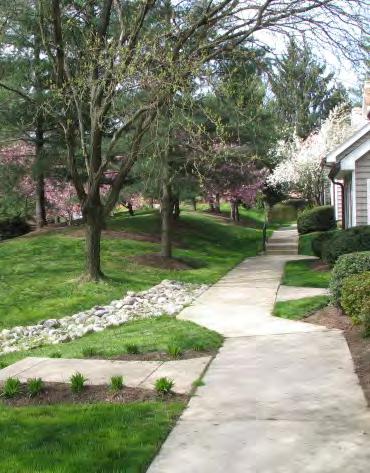










Community Association Management plays a crucial role in maintaining the harmony, functionality, and aesthetics of residential communities. As the liaison between the homeowners and the board of directors, managers and management companies must navigate complex interpersonal dynamics, enforce rules, and handle finances. Ethical conduct is paramount in ensuring that these responsibilities are carried out with integrity, transparency, and fairness.
Ethics in Community Association Management are essential for several reasons:
1. Trust Building: Ethical conduct fosters trust between homeowners, the board of directors, and management companies. When stakeholders trust that decisions are made fairly and transparently, community cohesion improves.
2. Legal Compliance: Adhering to ethical standards helps ensure compliance with local, state, and federal laws, reducing the risk of legal issues that can arise from mismanagement or fraud.
3. Conflict Resolution: Ethical guidelines provide a framework for resolving conflicts, promoting fairness, and ensuring that all parties feel heard and respected.
4. Professional Reputation: Ethical behavior enhances the reputation of management professionals and companies, attracting more clients and fostering longterm relationships.
The CAI Code of Ethics sets forth standards that community association managers should follow to maintain high professional and ethical standards.
Community association managers must act in the best interest of the association and its members. This fiduciary duty requires managers to:
• Maintain Transparency: Provide clear, accurate, and timely information to the board and homeowners.
• Ensure Accountability: Properly manage association funds, maintain detailed records, and conduct regular financial audits.
• Avoid Conflicts of Interest: Disclose any potential conflicts of interest and refrain from activities that could compromise their objectivity.
By upholding their fiduciary responsibilities, managers safeguard the association’s financial health and build trust within the community.
Managers must treat all members of the community with respect and fairness, regardless of personal feelings or biases. This involves:
• Impartial Enforcement: Apply community rules and regulations consistently and without favoritism.
• Respectful Communication: Communicate effectively and courteously with all homeowners, addressing concerns promptly and professionally.
• Continuous Improvement: Commit to ongoing education and professional development to stay abreast of industry standards and best practices.
Emphasizing professionalism and fairness ensures that all community members feel valued and respected, fostering a positive living environment.
Protecting the privacy of homeowners and the integrity of the association is crucial. Managers must:
• Safeguard Information: Keep personal and financial information of homeowners confidential and secure
• Uphold Honesty: Provide truthful and accurate information to the board, homeowners, and vendors.
• Promote Ethical Standards: Model ethical behavior and encourage others in the community to adhere to high ethical standards.
Maintaining confidentiality and integrity not only protects individuals’ privacy but also reinforces the credibility of the management company.
Ethical conduct in Community Association Management is the cornerstone of a well-functioning, harmonious community. By prioritizing fiduciary responsibility,
professionalism, fairness, and confidentiality, Community Association managers and management companies can build trust, ensure legal compliance, and enhance their professional reputation. Ultimately, adhering to ethical standards benefits everyone in the community, fostering a positive and thriving residential environment.
The CAI Code of Ethics provides a robust framework for managers to ensure they act with integrity, transparency, and fairness.
https://www.caionline.org/LearningCenter/credentials/ Documents/ethics_code.pdf
Written by: Staci M. Gelfound, CMCA®, AMS®, PCAM®
President, WPM Real Estate Management, AAMC® 443-796-7459 sgelfound@wpmllc.com
Many of our Chesapeake Chapter members, Business Partners and Board members had a great day on Tuesday, July 16th partnering with The Complete Player Charity and their STEAM campers for the 3rd year in a row! The day was spent working with the campers and educating them on how to run Board meetings/Community management and governance, and about real-world career skills, such as roofing, clean-up/remediation, landscaping, and engineering! Many thanks to the companies and everyone that participated!








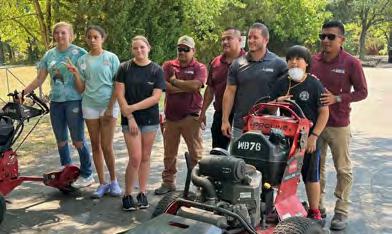

Riding the waves of financial change means one has to be prepared for the constant rise and fall of ever-changing conditions on any given day and throughout the year. The proper management and assessment of money for Community Associations comes in all different forms – some are easier and some are harder to navigate. But, if you bring your shades and spend some time with our qualified financial surfing instructors, you will more readily be able to keep all ten toes on the board! Register Today!
CLASS TOPICS INCLUDE: (Choose One From Each Class)
How to Read Financials
Speakers: Vicki Eaton, CMCA, AMS, LSM, PCAM
Staci Gelfound, CMCA, AMS, PCAM, WPM Real Estate Management
Michelle Jones, CMCA, AMS, LSM, PCAM, Lake Linganore Association
Tax Aspects
Speakers: Theresa McCoy, CPA, American Community Management
Jonathan Strauss, CPA, Strauss & Associates
Budgeting
Speakers: Trent Harrison, CMCA, AMS, PCAM, FirstService Residential
Mac Staples, PCAM, D.R. Horton
Special Assessments and Loans
Speakers: Don Plank, PCAM, EJF Real Estate Services
Noni Roan, CMCA, Pinnacle Financial Partners
5-year Capital Projects – Planning & Funding
Speakers: James Anderson, PE, Becht Engineering BT
Michelle Baldry, PE, PRA, RS, Reserve Advisors
MD LAC Update
Speakers: Scott Silverman, Esq., Nagle & Zaller, P.C.
Chad Toms, Esq., WHITEFORD
Monday,October7,2024
All attendees must sign the Chapter’s suitcasing policy on their registration form EARLY BIRD RATES ARE AVAILABLE!
SCHEDULE OF THE DAY
*Attendees will be able to attend 3 of the 6 classes offered 5:30 am – 7:45 am Exhibitor Set-Up 8:00 am – 9:30 am Breakfast/Registration/Morning Expo 9:45 am – 10:00 am Welcome/Introductions 10:15 am – 11:30 am Class Time #1 11:30 am – 1:30 pm Lunch/Afternoon Expo 1:45 pm – 3:00 pm Class Time #2 3:15 pm – 4:30 pm Class Time #3 2:30 pm – 4:00 pm Business Partner Appreciation Social 4:30 pm – 6:00 pm Wrap Party

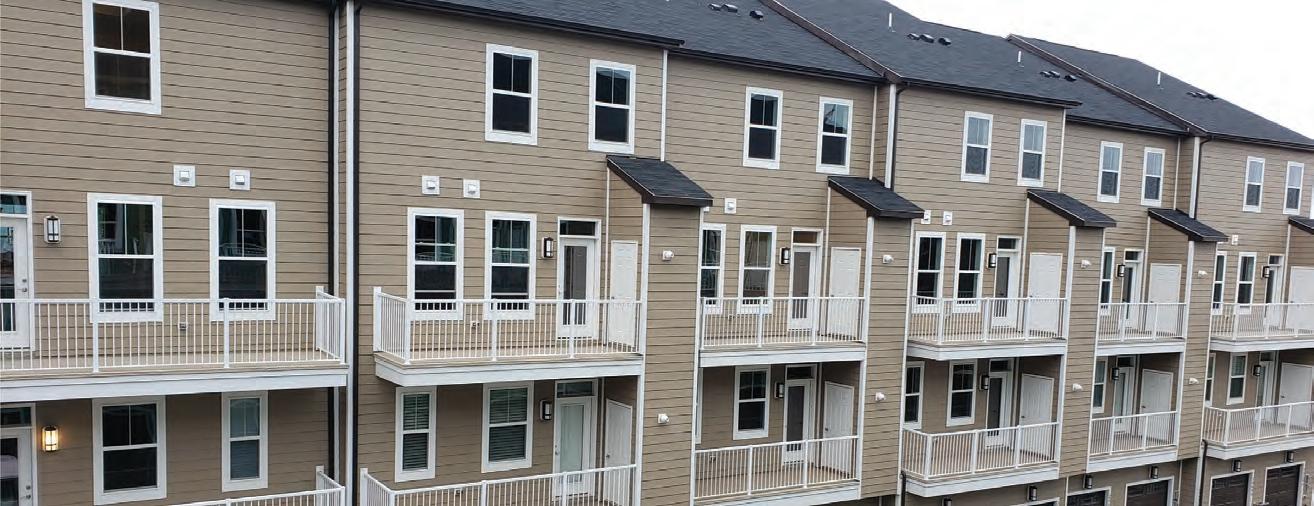
Professionally installed for long lasting performance you can trust. Duradek® has set the standard for waterproof outdoor ooring in a wide range of climates. The Duradek® system provides attractive, low maintenance waterproof solutions for:
Sundecks + Balconies
Flat Roof Decks
Pool + Hot Tub
Surrounds
Stairs + Walkways
Porches + Patios
Any Exterior
Walking Surface

Durarail powder-coated aluminum is the easy choice for durable, attractive railing and fencing. The strength and non-corrosive qualities of aluminum withstand the e ects of the harshest climates. Durarail has all the railing solutions you need for maximizing views or protecting privacy.
A long-lasting, reliable guardrail system
Low maintenance durable powder coated finish
Excellent warranty for performance assurances
Fantastic selection of standard and custom options


A Great Day at our 2024 Summer Crab Feast!
Manythankstoour SocialCommitteeforputting thiseventtogether!

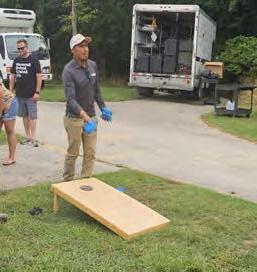
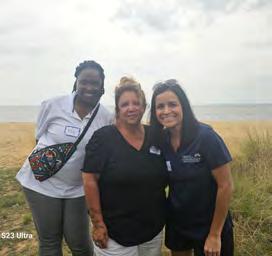












Many Thanks to our Sponsors!
Artistic Landscaping, Inc.
Atlantic Maintenance Group
National Cooperative Bank
Palmer Brothers Painting & General Contracting
Prestige Tree Experts
Roofpro, LLC
Rose Paving, LLC
Toepfer Construction Co., Inc.

September is Emergency Preparedness Month –Are you Prepared?
The three-article series following this introduction is intended to help you and your community prepare for emergencies that may come your way.
September marks an important time for communities across the nation to focus on safety and readiness.
National Emergency Preparedness Month, observed every September, serves as a critical reminder for individuals, families, and organizations to evaluate and enhance their preparedness strategies for unforeseen events. Being prepared can make a significant difference in mitigating the impact and ensuring swift recovery.
Emergency preparedness is not just about having the right supplies on hand; it encourages everyone to be proactive, not reactive. By creating a plan, building a kit, staying informed, and getting involved in your community, you can reduce the impact of disasters on your life and the lives of those around you. Preparedness is about empowering individuals and communities to be resilient, respond effectively, and recover more swiftly when disaster strikes.
Waiting until an emergency occurs to learn that you are not prepared can make an overwhelming situation so much harder. Disaster Restoration Experts in our industry have compiled some articles that can help you get prepared before an emergency happens. Additional resources can be found at the following:
www.ready.gov/calendar

As we look to the fall and winter months, it’s the perfect time to ask yourself –is your team ready for the next disaster?
This is the best time of year to dust off your disaster plan and prepare for the change in seasons… which eventually leads to our East Coast winter weather calamities. September is National Preparedness Month, a time designated by FEMA to encourage individuals, families, and communities to plan for disasters. Established after the tragic events of September 11, 2001, National Preparedness Month aims to promote disaster readiness and resilience across the nation. As community association managers and members of condominium and HOA communities on the East Coast, it’s crucial to ensure your disaster plans are up-to-date and effective.
Over the last 15 years, disaster planning has evolved significantly, particularly for the multifamily community – which includes condominiums and HOA’s. Initially, disaster plans were confined to binders stored on a bookshelf in an office, often overlooked and unused. These traditional disaster planning binders housed various emergency procedures but weren’t practical, given that disasters don’t conform to a 9-to-5 schedule.
In the mid-2000s, the trend shifted to digital storage on shared drives and virtual file folders. This transition improved accessibility but still presented challenges like accidental overwrites and limited mobile access. Today, many communities and professionals prefer contemporary web-based platforms for disaster planning. Managed by specialized services, these platforms offer superior accessibility and ease of use.
Regardless of which method applies to your disaster plan, consider the following key aspects to ensure it is effective and accessible:
• Accessibility: Ensure the plan is accessible anywhere, even during internet or cellular disruptions.
• User-Friendly: Make it easy to navigate, especially for those unfamiliar with your property.
• Current Information: Keep the plan updated with current needs and contact information.
• Multiple Access Points: Allow multiple people to access the plan.
As you update or build your disaster plan from scratch, make sure to include these essential components:
• Procedures: Outline actions for various disaster and emergency scenarios.
• Shut-Off Locations: Detail critical building components and their management.
• Hazardous Materials: Specify on-site hazardous materials and their locations.
• Contact Lists: Include internal and external contacts, staff, and board members.
• Preferred Business Partners: List contacts for emergency services.
• Community Resources: Identify local resources and how to access them.
• Evacuation Plans: Include egress paths and alternate exits.
Creating a comprehensive disaster plan feels like a daunting task but breaking it down into specific types of disasters can make it more manageable. Here are some common disaster types, and how to build out sections of a disaster plan to address different scenarios:
• Water Damage:
o Assessment: Identify areas prone to flooding or water intrusion.
o Prevention: Implement measures like proper drainage systems and regular maintenance of plumbing.
o Response: Develop procedures for immediate water shut-off, drying, and contacting restoration professionals.
• Fires:
o Assessment: IConduct fire risk assessments and identify potential hazards.
o Prevention: Install and maintain smoke detectors, fire alarms, and sprinkler systems.
o Response: Outline evacuation procedures, designate assembly points, and ensure fire extinguishers are accessible.
• Severe Weather:
o Assessment: IUnderstand the types of severe weather your area is prone to, such as hurricanes, tornadoes, or blizzards.
o Prevention: Secure outdoor items, reinforce windows and doors, and ensure the structural integrity of buildings.
o Response: Create a communication plan for alerts and updates, establish shelter-in-place protocols, and prepare emergency kits.
Starting a disaster plan can seem overwhelming, but taking it step-by-step can simplify the process:
• Initial Assessment: Begin with a thorough assessment of your community’s vulnerabilities and potential risks. Identify the most likely disasters and prioritize them.
• Gather Information: Collect all necessary information, including contact lists, shut-off locations, and emergency procedures. Use templates and checklists to ensure you don’t miss anything.
• Engage Stakeholders: Involve key stakeholders, such as board members, staff, and community members, in the planning process. Their input and participation are crucial for the plan’s success.
• Utilize Technology: Leverage contemporary web-based platforms to store and manage your disaster plan. These platforms offer features like real-time updates, mobile access, and easy sharing.
• Training and Drills: Conduct regular training sessions and drills to ensure everyone knows their roles and responsibilities. Practice different scenarios to improve preparedness.
• Review and Update: Regularly review and update your disaster plan to reflect changes in your community and new best practices. Schedule annual reviews and adjust as needed.
As we look towards National Preparedness Month, take this opportunity to evaluate your own disaster plan. Anticipate large scale disasters as well as everyday occurrences like water losses.
You can ensure your community is well prepared for any emergency by focusing on the key considerations, building out comprehensive procedures, and putting an updated plan in the hands of your team. While we hope your disaster plan remains unused, its importance cannot be overstated. Technology continues to advance, and with it, the need to keep disaster plans up-to-date and easily accessible.
As a seasoned disaster restoration expert, I encourage you to act now and make disaster preparedness a priority for your community. No one ever doubts the importance of a disaster plan, but they never feel urgent…until you need one.
Written by: Beth Bencivenni Vice President of Sales and Marketing, RestoreCore beth.bencivenni@restorecore.com

The business of insurance restoration contracting has become quite competitive. Insurance restoration is viewed by many contractors as guaranteed work not affected by the economy. So, with all these “new” restoration contractors ready and willing to repair fire or water damaged property, promising the managers and owners the sky; how does one select the capable, qualified contractor?
The answer is simple, ask for references from your industry and interview them! An established insurance restoration contractor with repeat customers is an optimum choice for a property manager or owner. You need to confirm that the contractor has the technical expertise, financial stability, and emergency service capability to properly serve you and your property/community. This might seem to give an unfair disadvantage to new contractors, starting in the business, but the disadvantage is not necessarily unfair. New insurance restoration contractors usually employ people who have worked for an established firm, possibly giving them the necessary technical experience. The financial stability necessary to complete larger, time-consuming projects needs investigating when contracting with a young insurance restoration firm. A good rule of thumb is to ask the contractor to prove their bonding capacity. Though a particular fire or water job may not require bonding, a property manager, uncertain of the contractor’s stability, should ask for it.
When interviewing references, be specific about the information you are seeking. If the reference uses the contractor in a manner that you will not, call another reference. Insurance restoration, particularly fire restoration, is not generic construction. Smoke removal, deodorization, mold, and mildew removal are samples of the specific challenges of an insurance restoration contractor, unrelated to general contracting, which are usually present in insurance restoration work. If you hire a contractor inexperienced in handling these obstacles, the results of your project will be quite disappointing.
Ask for a reference regarding the quality of the emergency services provided by the contractor. Emergency services are usually the most critical need of a property manager regarding fire and water restoration. When inquiring about a firm’s emergency services, ask what the typical
expected response time is. Ask this question to both the contractor and their reference and average the numbers for an accurate time. Selecting an insurance restoration firm with reliable emergency services is extremely important. Having one contractor on your job from beginning to end will expedite the repairs while minimizing confusion and miscommunication, ultimately causing the least amount of disruption possible at the property.
The time in which you select an insurance restoration contractor is also an important factor. If you select a contractor at the time of a fire or flood, you will not have the opportunity to research the contractor’s references and success rate. The time to select an insurance restoration contractor is when you have no current, pressing needs. Selecting an insurance restoration contractor should never be based on cost, considering the contractor and the insurance company will reach a mutually acceptable price for every project as it occurs. Insurance companies also require insurance restoration companies to use specific software in order to create scopes of work, which removes the variances in cost provided by each contractor. Also, severe weather can cause crises, such as weeks of frozen pipes. Therefore, an insurance restoration contractor will need to set priorities, giving emergency service to existing customers first. In these instances, a property manager who regularly uses the same contractor for structural repairs and emergency services will have an advantage in getting timely service.
Some areas of concern that should be addressed are: Can they provide the service I will need? Have they had a good success rate with customers who have had the same requirements that I will have? Are they financially stable? Do they provide proven emergency services? By investigating these details, a property manager or owner can select an insurance restoration contractor based on the three most important and basic issues of financial stability, technical expertise, and emergency service.
Written by: Sharon Toepfer Burns President, Toepfer Construction Co., Inc. 301-336-8600

Disasters can strike at any time, leaving communities exposed and in need of immediate action to respond and recover. Natural disasters like tornadoes, floods, hurricanes and other incidents such as fires or significant water leaks can present challenges that result in more complex claim situations.
Before a disaster, set well defined protocols. This will guide your community. Assign specific roles and responsibilities to both the board members and management team. Focus on preventative maintenance, evacuation plans, and keep updated emergency contacts on hand. Review your insurance policies annually with your broker to ensure adequate coverages are in place.
Responding:
During a disaster, focus on life safety first. For example, in the event of a fire, make sure emergency services are responding. This may include agencies such as the American Red Cross which can assist with housing.
After a disaster, swift action is critical in obtaining the best outcome of an insurance claim.
Once the danger subsides and any safety concerns have been addressed:
1) Prevent Further Damage - Insurance policies require insureds to prevent further damage where possible. Failure to do so could result in denial or limited coverage. Example, if a major pipe burst occurs, shut off the water supply and arrange to dry out the area.
2) Notify the Insurance Agent or Company - Insurance claims should be reported in a timely manner with accurate information. Provide details including date, location of the loss, type of loss (Example: Flood or Fire) and information on the damages.
3) Obtain estimates for repair work as soon as possible - Also contact other appropriate professionals immediately after the loss. Remediation, repair, engineers, attorneys are resources available for prompt and proper recovery.
4) Assist the adjuster - The insurance company will typically assign an adjuster within 48 hours to manage the claim. They will need to inspect the property and obtain photos of the damages, copies of the association’s bylaws, and the estimates for repair and remediation. Adjusters rely on the association’s responsiveness to appropriately address review. Therefore, the timely contact between both parties is imperative.
5) Organize Invoices - Once repairs are underway, confirm that invoices include clear descriptions as to scope of work for each. Payments should not be made from the association’s general funds, but from the payments from the insurance company. It can be difficult to obtain additional documentation once vendors have received payment, and sometimes additional documentation is needed to close out the claim.
6) Consider a Public Adjuster - In the event of severity claims, consider hiring a third-party public adjuster to help streamline the claims process and maximize
coverages. You should always discuss this step with your agent or broker before signing a contract. You should be aware that, once a public adjuster is contracted, your agent can no longer negotiate directly with the carrier on your behalf.
7) Communicate and update residents - Disasters can be stressful and confusing situations for residents. Keep residents updated on safety protocols, recovery efforts and any changes to the community the loss has created.
8) Future Prevention - After the disaster. conduct a review of the association’s response and identify areas of improvement.
Handling disaster claims requires preparation, organization, and compassion from community associations. By establishing clear protocols, communicating effectively, and diligently managing recovery efforts, associations can minimize disruption and support residents in repairing or rebuilding the community.
Written by: Chase Hudson, CIRMS, SISR, EBP
Senior Commercial Risk Advisor-Real Estate
Sahouri Insurance
202-765-1358
chudson@sahouri.com

The Chesapeake Region Chapter of CAI will be celebrating its 45th year in 2025! What an amazing ride it has been. Founded with the purpose of supporting and advocating on behalf of community associations, the Chapter continues to provide critical support to the many communities and related professionals in our region.
A special thank you goes out to the early Chapter supporters who believed in the vision laid out by the Chapter founders and CAI. Please join us in celebrating these remarkable pioneers for their service and contributions to the Chesapeake Region Chapter of CAI.
We are proud to be a part of their legacy!
Condominium Venture, Inc. Joined on 10/01/1975
For more information and to view the list of courses offered in 2024, visit www.caionline.org/LearningCenter/ Education-for-Managers/Pages/ default.aspx
Goldklang Group CPAs, P.C. Joined on 01/01/1976
Wallace H. Campbell & Company Joined on 01/01/1976
Strauss & Associates, P.A. Joined on 09/01/1980
Elmore Law Group, P.C. Joined on 09/01/1981
Kramon & Graham, PA Joined on 04/01/1983
Mann Properties, Inc. Joined on 04/01/1985

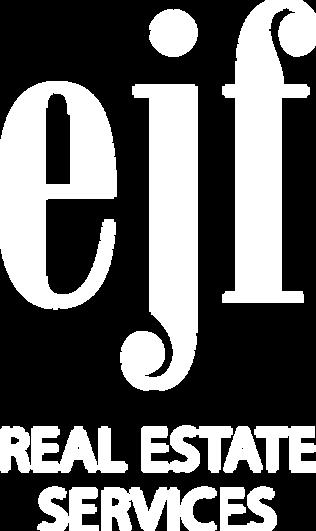




On April 23, 2024, the Federal Trade Commission (FTC), by a 3-2 vote, issued its Final Non-Compete Clause Rule, which would have banned most non-compete agreements for almost all workers in the country (employees and independent contractors alike). The Rule was slated to take effect on September 4, 2024.
A noncompete clause is a contractual provision that blocks an employee from working for a competing employer, or starting a competing business, within a certain geographic area, during employment, and for a period of time after the employee’s relationship ends. These provisions are widely used across the country, and, until the Rule, were governed by either state statutes and/or well-developed case law.
Legal experts have held the view that the FTC exceeded its authority with this rule-making and that the Rule would eventually be found invalid. Indeed, within one day of its promulgation, a lawsuit was filed in the U.S. District Court for the Northern District of Texas requesting that the court delay the enforcement of the rule on the grounds that the Rule was unlawful. The Texas District Court Judge initially granted a narrow and limited injunction prohibiting the enforcement of the Rule against the plaintiffs in that action on a temporary basis. Then, on August 20, 2024, the Texas District Judge ruled that the Rule is an unlawful agency action, is not enforceable, and cannot take effect anywhere in the United States -- permanently. A Florida District Court has also granted a limited injunction on
similar grounds to the Texas District Judge’s initial ruling.
In the meantime, a District Judge for the U.S. District Court for the Eastern District of Pennsylvania came to the opposite conclusion of the Texas and Florida courts finding that the Rule was valid and enforceable. However, that ruling does not have nationwide effect.
If the FTC appeals the Texas Court decision to the 5th Circuit Court of Appeals, where it would likely lose, the FTC could appeal to the U.S. Supreme Court because of the inconsistent rulings among the federal district courts. Most legal experts believe the FTC’s efforts will be futile. While there is no crystal ball, given recent Supreme Court ruling that permits courts to overrule agency actions, it is more likely than not that the FTC’s noncompete rule will be dead on arrival in the Supreme Court.
Even prior to the Texas Court ruling on August 20, 2024, most legal experts were advising that employers continue to use noncompete agreements, so long as such agreements were enforceable under the applicable state law, while the legal challenges played out. With the Texas Court ruling, employers can continue the business practice of enacting reasonable non-compete agreements with employees as permitted in their state.
Written By: Susan Salen, Esq. Rees Broome, PC ssalen@reesbroome.com
We
AT OUR ANNUAL GOLF OUTING ON MONDAY, JUNE 24TH!




Many Thanks to our 2024 Golf Outing Sponsors!
Aaction Home Repairs and Restoration, Inc.
American Pool
Atlantic Maintenace Group
Becht Engineering BT
Bopat Electric Co., Inc.
BrightView Landscapes
Complete Landscaping service
EJF Real Estate Services
Exterior Medics
Fellner Legal Services
First Citizens Bank
Four Twelve Roofing



GMC Contractors, Inc.
Hann & Hann Construction Services
Hawkins Electric Service
ISTORMWATER LLC
Knott Mechanical
Kolb Electric, Inc.
Kris Konstruction Roofing Professionals
MillerDodson Associates, Inc
Minkoff Company
Nagle & Zaller
North Arundel Contracting
NV Roofing
Palmer Brothers Painting & General Contracting
Pinnacle Financial Partners
Pro Painting & Contracting
Raine & Son LLC
Rees Broome, PC RestoreCore
Roofpro, LLC
Sahouri Insurance
SBC Outdoor Services
Servpro of Rockville-Olney
SI Restoration
Standard Paving & Concrete
The Falcon Group Engineers, Architects & Reserve Specialists
Thomasville Restoration
Tidewater Property Management, Inc., AAMC
Toepfer Construction Co., Inc.
TRC Engineering

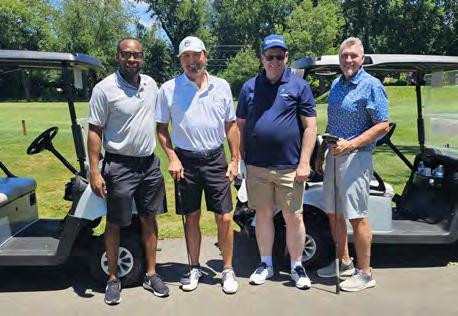






First Place: Larry Edmonds, Ryan Bates, Amy Waldron, Michael Eckloff
Second Place: Cody Bishop, Marc Greenberg, Rick Bowling, Matthew Merckel
First Place: Rob Meier, Nick Cole, Chris Petrik, Jason Kingan
Second Place: Marty Ehrlich, Matt Baron, Chelsey Kelly, Dave Baker
First Place: Cal Bogertman, Aaron Winsker, Tim Larsen
Second Place: Scott Severn, Mike Mangum, Jen Bennett, Staci Gelfound
Longest Drive Men – Evan Picciotto
Longest Drive Women – Kate Cornell
Closest to the Pin Men – Jason Kingan
Closest to the Pin Women – Ellen Throop
Straightest Drive Men – Ryan Bates
Straightest Drive Women – Ellen Throop





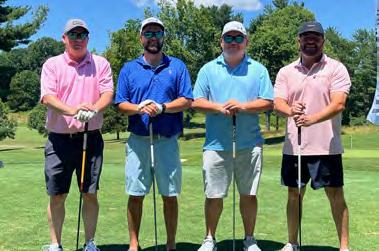
Chase Hudson, Chair, Sahouri Insurance
Thomas (T.J.) Socks, Vice-Chair, Becht Engineering BT
Rebecca Clemson-Petrik, Board Liaison, FirstService Residential
Andy Barnes, NV Roofing
Nick Cullison, Four Twelve Roofing
Ian Douglas, WHITEFORD
Scott Duke, The Witmer Group
Larry Edmonds, American Pest
Joe Esposito, Hann & Hann Construction Services
Rasneek Gujral, Rees Broome, PC
Austin Haspert, Foam Solutions
Alan Llanes, Siemens Industry, Inc.
Matthew Merckel, Tidewater Property Management
Evan Picciotto, Kris Konstruction Roofing Professionals
Keith Rivers, Atlantic Maintenance Group
Scott Severn, RestoreCore
Linda Sheets, Bopat Electric
Carol Shenk, First Citizens Bank


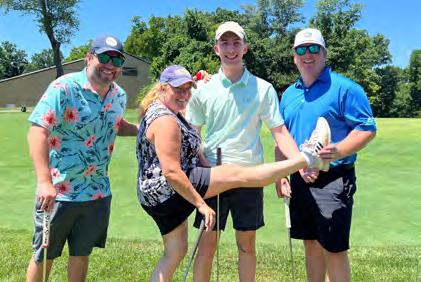




Community Association Services
◼ Transition Studies
◼ Capital Reserve Studies
◼ Inspections & Replacements
Roof
Siding
◼ Façade Investigations & Corrections
◼ Infrared Thermal Imaging
◼ Drone Services
◼ Site Drainage Corrections
◼ Asphalt Paving Design
◼ Structural Corrections
◼ Concrete Inspections
◼ Mechanical, Electrical & Fire Protection Systems
◼ Construction Inspections & Oversight
◼ Litigation Support







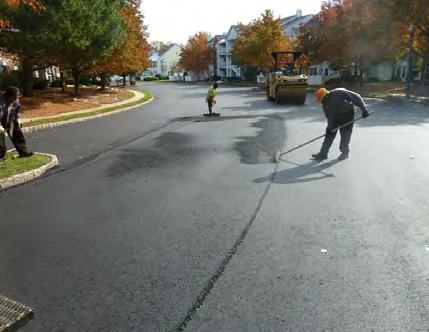
Thursday 11th
Charting Your Course – Virtual
Tuesday 30th
Homeowner Webinar“Working Together as a Board”
FEBRUARY
Wednesday 21st
Breakfast Webinar – “Governance”
Tuesday 27th & Wednesday 28th
Board Leadership Development Workshop
MARCH
Wednesday 20th
Breakfast Seminar
Ten Oaks Ballroom, Clarksville, MD
APRIL
Friday 12th
Delmarva Breakfast Seminar, Legal Roundtable Atlantic Sands, Rehoboth, DE
MAY
Monday 6th
Delmarva Golf
Glen Riddle Golf Club, Berlin, MD
Wednesday 8th – Saturday 11th
CAI National Conference Las Vegas, NV
Wednesday 22nd Breakfast Seminar Ten Oaks Ballroom, Clarksville, MD JUNE
Monday 24th Golf Outing
Norbeck Country Club, Rockville, MD
Monday 7th Annual Symposium & Expo Live! Casino & Hotel Maryland, Hanover, MD Wednesday 23rd Homeowner Webinar
Thursday 7th – Friday 8th Delmarva Happy Hour & Expo Princess Royale, Ocean City, MD Tuesday 19th